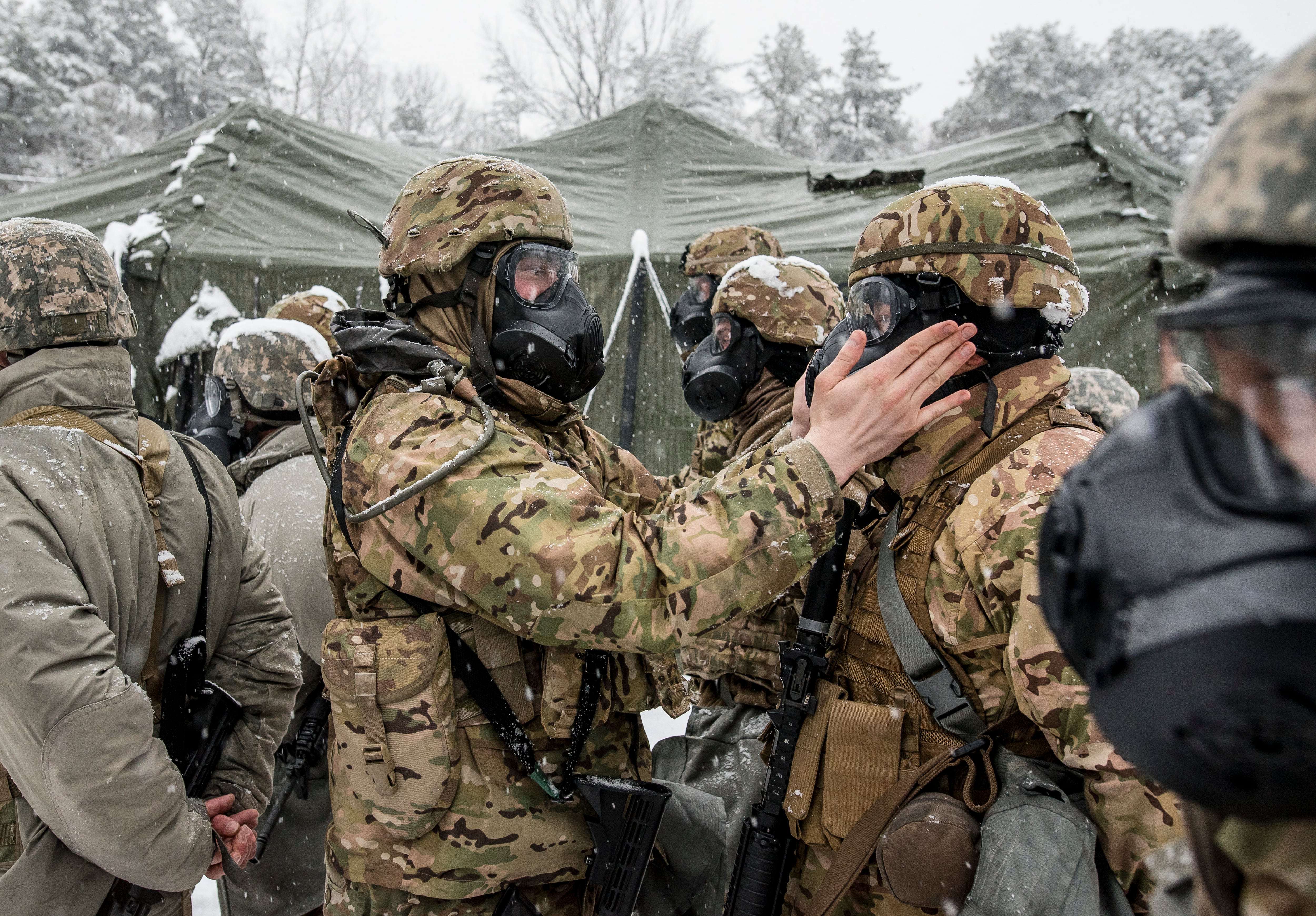Nerve agents are some of deadliest substances on the planet. From Sarin gas, which turns the human nervous system against itself, to mustard gas, which burns on contact and disrupts respiratory function, these often unseen chemicals are ones the Army sees as not only worth protecting against, but working to destroy.
A new fabric, generated by Omar Farha’s lab at Northwestern University with cooperation from the U.S. Army, is intended to do just that.
“With the correct chemistry, we can render toxic gases nontoxic,” Farha, associate professor of chemistry in the Weinberg College of Arts and Sciences, said in a release. “The action takes place at the nanolevel.”
In simple terms, the fabric will have a coating made of a molecule called MOF-808 that renders VX and Soman, which can cripple the human nervous system, ineffective because it pulls “water from the air,” Futurism reported. Essentially, if or when a nerve agent comes in contact with the fabric coating, the water destroys it.
“MOFs can capture, store and destroy a lot of the nasty material, making them very attractive for defense-related applications,” Farha noted in the release.
The coating for the fabric is the result of 10 years spent working to develop more chemically protective Army uniforms, Wired reported. Currently, the service has fabric that absorbs the effects of nerve agents, but does not neutralize them.
Wired also reported that the fabric works as long as it’s in an environment with at least 30 percent humidity, adding that, when tested for breathability, it performed even better when an excess level of perspiration was involved... because of the added moisture. For soldiers, perhaps soon, nerve agents will be no sweat.
Sarah Sicard is a Senior Editor with Military Times. She previously served as the Digitial Editor of Military Times and the Army Times Editor. Other work can be found at National Defense Magazine, Task & Purpose, and Defense News.
Olivia is a reporting Intern for Military Times, and a junior Communication student at George Mason University.





